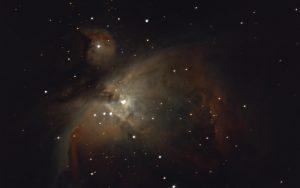You would think with running my imaging workshops, I knew a lot about astrophotography. Well, I think I do, but there’s nothing like getting a new piece of gear to bring you down a peg or two. You suddenly realise that despite all that knowledge packed in that old noddle, there’s still a flipping heck of a lot more you really don’t know anything at all about.
After purchasing the C11, I still had enough in my observatory pot to purchase a one-shot colour camera. Tri-colour imaging with a mono camera is great, but, let’s face it, it’s a real faff. A lot of the time you want something quicker and easier.
Having played with an Altair 183C Hypercam last year, and processed some images with it, this seemed to fit the bill quite nicely. It was very sensitive, easy to use and more importantly was reasonably affordable, and well within my budget.
So having made my decision, the purchase was made and I received this very nice looking camera. Trouble is, after it arrived, our house move very quickly descended upon us. Apart from a few Jupiter and Saturn images using the C11, which were extremely successful, the camera quickly went onto the back burner.
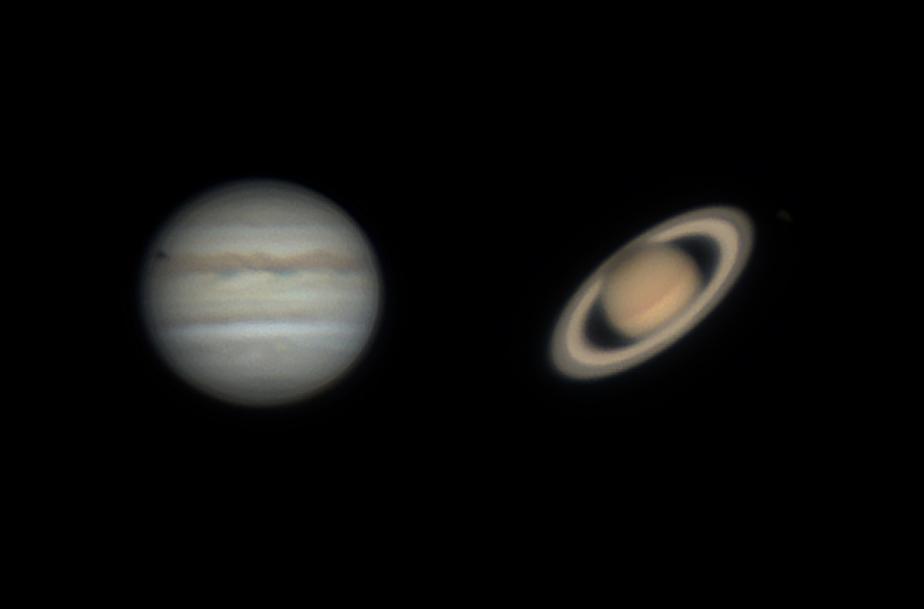
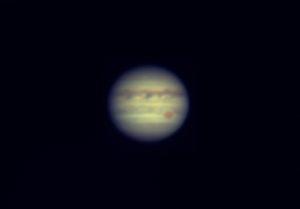
After moving, it took quite a number of weeks before I finally got my telescope pier installed. In the few times that circumstances and the weather actually allowed me to get out to experiment, I very quickly got extremely frustrated with the camera. Imaging with it, this time was really challenging. Stacking images was a nightmare. Could I get any colour in my images? No way! There was obviously much more to take into account when operating this camera than I had anticipated.
Comet 21P and The Dumbbell Nebula, but in only produced monochrome images when stacked. So frustrating. Whatever file format I used, it made no difference to the result.
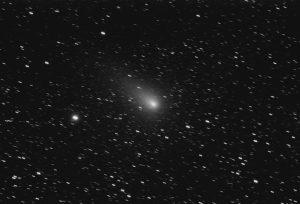
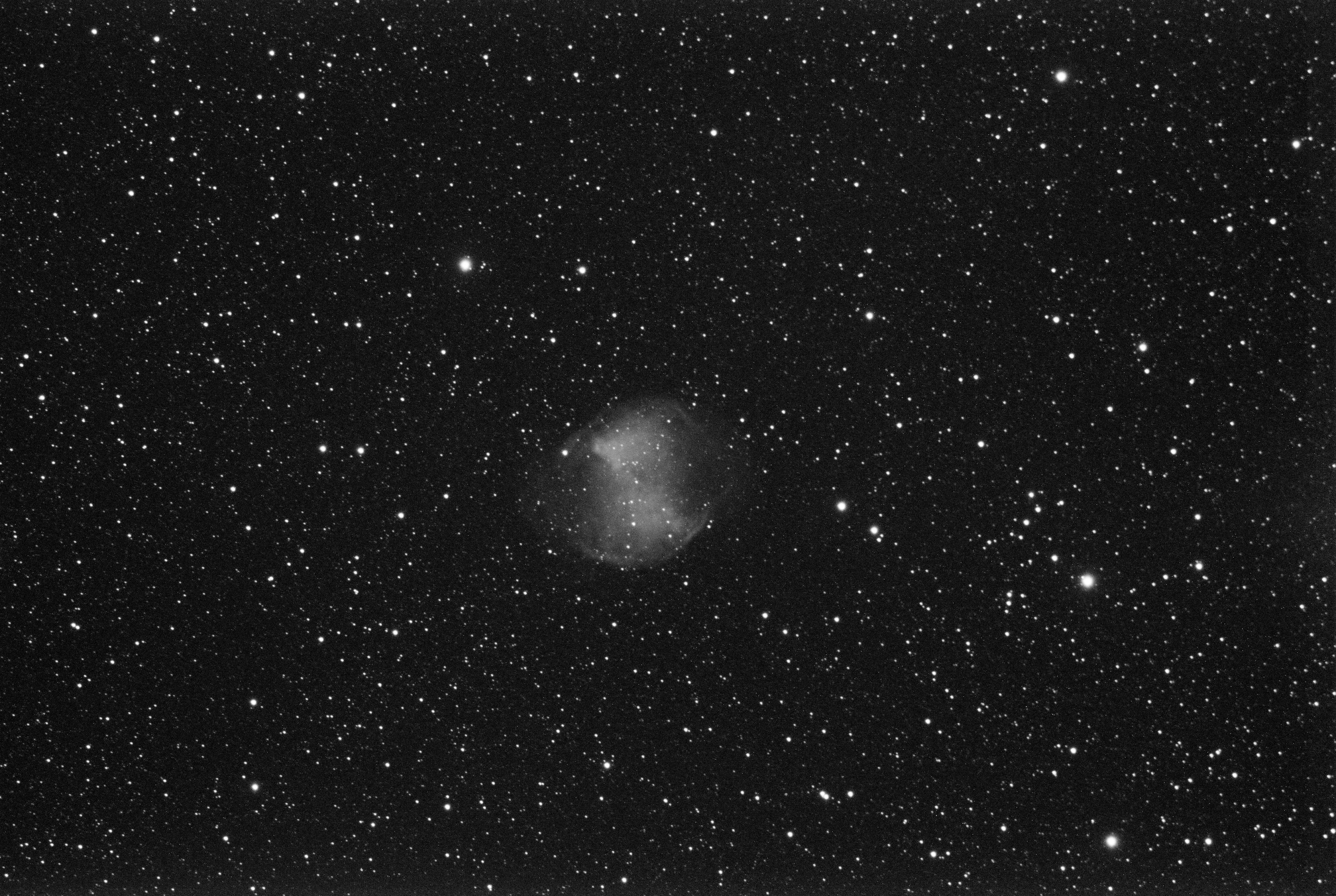
Hours of Googling and trawling the astronomy forums gave me some snippets of what I might have been doing wrong. But there were no real solutions or tried and trusted workflows written out to help someone new like me to getting this camera up and running successfully.
I will be writing my own guide as soon as I get a chance, so watch this space.
(I’ll add the link to my guide here when I’ve done it).
So it was still going to be a case of lots of trial and error and that familiar steep learning curve, we all love so much.
First red herring was that you get a years Pro license for Sharpcap with the camera.
So I was using this to take my images.
I have since reverted back to the Altair Capture software. Simplifying this capture process now appears to be doing the trick. I’ll re-visit Sharpcap once I’m happy the camera is working as expected. I also found that I had to make some changes in Deep Sky Stacker so it handles the FITS files produced by the camera correctly and recognises the correct Bayer matrix to produce colour images.
on the 17th of September, I got back from my talk at Retford. Despite the skies having a lot of clag in the air, (the Milky Way was almost non-existent), as I had thought I had got my head around things, I decided the time was right to get out and see if I could produce some reasonable colour images.
And boy, this time the camera didn’t disappoint. Despite the bright sky background, some very faint stars were visible in the individual subs, and only 40 seconds exposure (I haven’t got my auto-guiding set back up again at this stage).
Later I found a problem registering the stars when I came to stack the images. This again was caused by the hazy background and the images being stacked on noise, rather than stars.
I finally gave up just after 3am, when thick clouds came over and hid things completely. It was nice to see Orion rising and catch up with Comet 21P, now in Gemini, again since Kelling.
Below are some of the results from that night.
If you want to see more images taken that night, go to my Flickr Site:
https://www.flickr.com/photos/eagleseyeonthesky
Now I just can’t wait for The Moon to get out of the way, so I can see just what this camera is really capable of.
NGC 7331 and the Deer Lick Group in Pegasus.
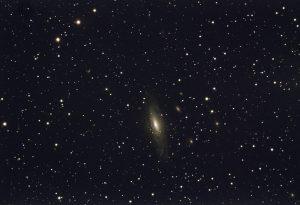
The nearby Stephans Quintet in Pegasus.
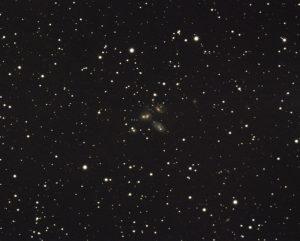
Comet 21P.
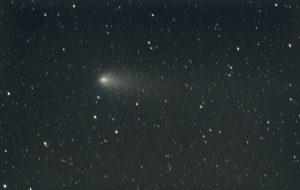
M42, The Great Orion Nebula.
Composite image of 3 separate images produced from 3 different sub-exposures.
10, 20 and 30 second.
